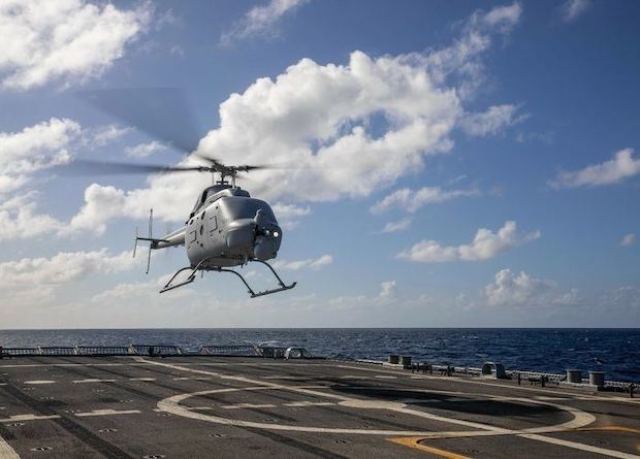The US Navy has used the MQ-8C Fire Scout reconnaissance unmanned helicopter for the first time in combat deployment. According to Northrop Grumman, this happened on December 14 aboard the ship of the near sea zone "Milwaukee".
Northrop Grumman has been developing the MQ-8C since 2012. Tests of the drone were completed in 2015, and in 2019 the US Navy adopted it. The military wants to replace the outdated MQ-8B, made on the basis of Schweizer 333 light helicopters.
The MQ-8C is a Bell 407 multi-purpose helicopter, on which remote control systems, reconnaissance equipment and additional fuel tanks were installed instead of seats and traditional onboard systems. The unmanned helicopter can stay in the air for up to 12 hours and carry up to 318 kilograms of payload. Its range through the control channel is 278 kilometers.
The MQ-8C is equipped with an active phased array radar. It allows it to detect surface targets at a great distance with high accuracy. And during tests last year, sonar buoys were installed on the drone to search for submarines.
The US Navy used the MQ-8C Fire Scout for the first time in a combat deployment on December 14 aboard the Milwaukee near-sea zone ship. Eric Soderbergh, head of the U.S. Navy's multitasking tactical unmanned Aerial Systems program, said the drone lives up to expectations. It is needed to work together with the MH-60R/S Seahawk deck helicopters, which do not have a radar. Fire Scout allows you to monitor outside the ship's radar near the coastal zone.
Despite the successful deployment, the US Navy is already analyzing possible alternatives to the MH-60R/S Seahawk deck helicopters and the MQ-8B/C FireScout unmanned aerial vehicles. The service life of the aircraft expires in the 2030s.
Vasilisa Chernyavtseva

